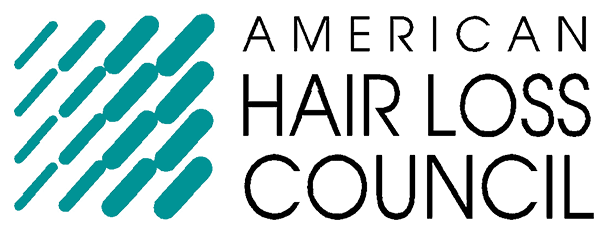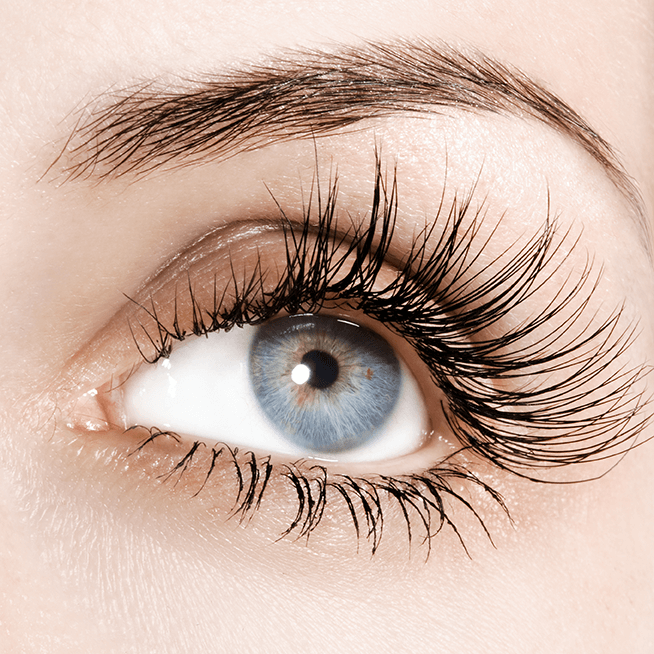Welcome to Bauman Medical, a uniquely different type of hair restoration practice.
Since 1997, Bauman Medical has been dedicated to providing every hair loss patient the highest quality results and personalized patient care in the field of hair restoration. We measure our success by helping you, our patients, successfully achieve and maintain your goals. Led by founder, medical director, and renowned board-certified Hair Restoration Physician Dr. Alan Bauman, his dedicated and caring team take pride in providing advanced treatments and procedures, accurate information, and, most importantly, a professional yet personalized approach.
Table of Contents
Having a Bad Hair Day?
Some Types of Hair Loss We Treat at Bauman Medical
Other Types of Hair Loss We Treat
Starting to lose your hair…?
Understanding Your Hair Loss
Hair Growth Cycles: Anagen, Catagen, and Telogen
The Impact of Changing Hair Growth Cycles and Shedding (What’s Normal?)
A Crash Course in the Role of Genetics and Hormones in Hair Loss
Scalp Health & Hair Loss
Male Pattern Hair Loss – Androgenetic Alopecia
Norwood Classification Chart – Male Pattern Hair Loss
Female Pattern Hair Loss
Hair Restoration Options
Getting Started: What You Can Do Now
Having a Bad Hair Day?
Hair loss and other changes affect different people in different ways. If you are suffering from hair loss or hair thinning and want to do something about it, we urge you to do your research, ask us questions, and then take action. When you are ready, we are here to help you restore and maintain a great-looking head of hair. Find out why nearly half of our patients travel in from out-of-town for Dr. Alan J. Bauman’s treatments and procedures.
At Bauman Medical, we specialize in treating men and women who are looking to enhance, maintain or restore their hair.
In general, the vast majority of patients we treat are experiencing mild, moderate, or severe hereditary hair loss–also known as male or female pattern hair loss or Androgenetic Alopecia–which is the most common type of hair loss. We also have effective medical solutions for many other types of alopecia (hair loss). If you are experiencing thinning or receding hair, we encourage you to browse our website and learn about what you can do to address your hair loss concerns. Dr. Bauman is available to help you by designing a results-oriented treatment program.
Some Types of Hair Loss We Treat at Bauman Medical:
• Male Pattern Hair Loss or baldness (Hereditary Androgenetic Alopecia)
• Female Pattern Hair Loss (Hereditary Androgenetic Alopecia)
• Plastic Surgery-Related Hair Loss (browlift/facelift scars or hairline distortion/recession)
• Traumatic Scars from Injury or Burns
• Eyebrow Loss
• Eyelash Loss / Weak Eyelashes (eyelash hypotrichosis)
• Hereditary High Hairline
• Hair Loss due to Medications, Nutritional Deficiencies, Stress, Hormone Imbalances
• Hair Loss due to Hair Breakage
• Hair Loss due to Scalp Inflammation
Other Types of Hair Loss We Treat:
• Scarring or Cicatricial Alopecias
• Central Centrifugal Cicatricial Alopecia (CCCA)
• Alopecia Areata, Alopecia Totalis, Alopecia Universalis
• Traction-Induced Alopecia from hair extensions, braids, weaves, or wigs
• Chemotherapy-Related Hair Loss
• Frontal Fibrosing Alopecia (FFA)
• Lichen Planus (LP) or Lichen Planopilaris (LPP)
Do you already have a diagnosis and need more information on treatment?
Schedule a private virtual or in-person consultation with Dr. Bauman today.
Starting to lose your hair…?
“Lately, I am noticing more scalp shining through…”
“I’m finding a lot of hair on my pillow…”
“I’m seeing my hairline or temples recede slightly…”
“I’m seeing more hair than usual in the drain…”
“I have to style my hair differently because of changes to my hair.”
For many of our patients—and, tens of millions of men and women—these signs are typically the first indicators of hair loss. It may surprise you to learn how frequently we also hear patients tell us, “I woke up one day with less hair,” “It just happened suddenly,” or “I saw myself with hair loss in a photo or video and I was shocked!”
In other cases, patients may observe a slow, but progressive thinning or receding of the hairline. Initially, they may want to believe that the loss is not significant. Then, seemingly “overnight,” the amount of hair lost is too obvious to deny anymore. For others, initial changes in their hair volume and density are actually so gradual, that they may only be detectable with the help of a scalp microscope like a HairCam or a scientific tool like a HairCheck trichometer that measures hair quantity and quality. For these patients, their hair loss appears to be quite sudden because it does not become noticeable to the eye until the hair density dips below a definite threshold. [Science tells us that you can lose up to 50% of your hair in a given area without it being noticeable by the naked eye!] For other patients, it might have been a photo, video, or a mirror that showed the results of a progressive hair loss that they didn’t realize was occurring.
Understanding Your Hair Loss
Before we elaborate on the types and causes of hair loss, it is beneficial to review basic information about how hair grows. The hair follicle, which appears as a tiny opening in the skin from above, is actually located a few millimeters under the skin. The hair follicle is responsible for producing the hair fibers we see as hair growing from the scalp. The follicle is very much alive, however, the hair fiber we touch, feel, see, style and cut are “dead” tissue much like your fingernails. Each hair’s root resides within the follicle which is connected to the body’s blood supply. The hair follicle which produces the hair is an incredibly tiny, yet complicated, micro-organ in the skin. It is connected to our blood circulation, nervous system, as well as oil (sebaceous) glands. Connected to each follicle is also a small muscle (that causes your hair to stand up on the back of your neck or your arm!) Hair follicles communicate within themselves and with other nearby follicles with small protein molecules and are also responsive to changes in your body’s hormones, stress level, medications you may take, the food you may eat, the health of your scalp, and many other influences.
Hair Growth Cycles: Anagen, Catagen, and Telogen
Every hair follicle produces hair in a three-stage cycle that repeats over time. The first stage of this cycle is active growth, known as the ANAGEN phase. The intermediate stage is the CATAGEN or degradation phase. And, the third stage is the resting or TELOGEN phase. Each hair follicle continually undergoes and repeats the cycle of hair growth, independently. And, at any given point in time, most of the hair on your head, is in the active growing Anagen phase, which lasts on average from two to six years. While the active stage of hair growth is the longest in duration, the Catagen intermediate degradation phase is the shortest, lasting approximately two to three weeks before entering the Telogen or resting phase which lasts about three to four months. During Telogen, the hair is not actively growing but usually remains within the hair follicle. Finally, it is at the end of the resting phase, as Telogen turns into Anagen, when a new Anagen hair pushes out the hair currently in the follicle. This phase typically has a duration of three to four months. It is the Telogen hairs that you see when they come off into your brush or comb.
The Impact of Changing Hair Growth Cycles and Shedding (What’s Normal?)
When an average, healthy individual reaches physical maturity, at or around the end of adolescence, he or she will have between 100,000 to 150,000 hairs on the head. Under normal conditions, the average person will “lose” or shed approximately 100 Telogen hairs per day and grow 100 Anagen hairs per day. It is normal to see about 100-150 hairs shed per day, but this can vary depending on styling habits and many other factors. Baldness or hair thinning occurs as changes to individual hair follicle cycling occurs. As most individuals get older, the percentage of hairs in the resting stage (Telogen phase) increases, while less hair remains in the active growth or Anagen phase. With hereditary hair loss, hair follicles spend more time in Telogen and less time in Anagen, and they also miniaturize or shrink. The sum total of these changes produce a gradually thinner, weaker, wispier, and shorter hair fiber over time.
Are you seeing excessive shedding and hair loss but don’t know what to do?
Schedule a private virtual or in-person consultation with Dr. Bauman today.
A Crash Course in the Role of Genetics and Hormones in Hair Loss
For many years, researchers told us that hair loss resulted from the genetics inherited from the mother’s side of the family. Now, advances in medical science offer proof that “baldness” genes can be passed down from either or both sides of the family. We also know that this inherited trait can appear to skip generations and even affect siblings differently. There are over 200 genes known as SNPs or “Single Nucleotide Polymorphisms” that regulate hair characteristics, including the onset and speed of hair thinning and baldness. Exciting breakthroughs in genetic testing now allow physicians to predict your risk of baldness as well as assess which treatments may work best for you.
Scalp Health & Hair Loss
You wouldn’t try to grow plants in depleted or toxic soil, would you? Today we know the health of the scalp plays a very important role in the quality and quantity of your hair. Common symptoms of poor scalp health include itching, flaking/dandruff, inflammation, excessively oily or dry scalp, scalp acne, dull or brittle hair, as well as shedding, hair breakage, and hair loss. Dr. Bauman has a keen interest in scalp health because an unhealthy scalp impairs hair growth as well as results and recovery from Regenerative Medicine procedures like PRP as well as hair transplantation. At Bauman Medical we have a complete “department,” called SalonB, dedicated to scalp health, led by an internationally trained, certified Trichologist (aka hair and scalp expert) who can help scientifically evaluate your scalp using a variety of tools and treat scalp problems with in-office and at-home interventions.
Male Pattern Hair Loss – Androgenetic Alopecia
For men, male pattern baldness or androgenetic alopecia is the most common form of hair loss. It is characterized by thinning and receding hair beginning at the temples and weakening of the coverage at the crown or vertex of the head. Over time, the hair at the temples continues to recede, leaving a central patch of hair at the front of the hairline and a growing bald spot at the crown. Eventually, as the hair loss in these areas widens, the baldness at the front and crown meet to form one large bald spot. Depending on the rate of progression of the hair loss, all that remains is a ‘border’ of hair around the side and back of the head. Male pattern hair loss is a concern for many men because as the hairline recedes, the face takes on a more aged appearance. Hair loss is seen by many as an unwanted sign of premature aging.
Male Pattern Hair Loss is considered “Chronic” and “Progressive:” It is well documented that men who are prone to male pattern hair loss will continue to lose more hair over time if the condition is not treated.
Norwood Classification Chart – Male Pattern Hair Loss
In men, it has been determined that Dihydrotestosterone (DHT), a breakdown product of the male hormone Testosterone, is the ‘trigger’ that causes the progressive miniaturization of hair follicles. If you are genetically susceptible to male pattern hair loss, DHT works to progressively miniaturize follicles (which then grow shorter, thinner, less pigmented hair) until they finally die. Certain prescription medications, like Propecia/finasteride, work to prevent and reverse the miniaturization of hair follicles by blocking the conversion of Testosterone into DHT. Finasteride often is considered the ‘cornerstone’ of medical therapy because it is safe and effective for the treatment of male pattern hair loss. Rigorous scientific data reveals that if a man takes finasteride for five years, he has a 90% chance of looking the same or better than he did when he started the medication with only a 2% chance of mild, reversible side effects. The same studies showed that 75% of men with untreated male pattern hair loss looked “much worse” at the end of the same five years. Treatment of male pattern hair loss should always include a long-term ‘hair loss prevention’ therapy, like finasteride, minoxidil, etc. A multi-therapy regimen may include prescription finasteride, minoxidil, medical-grade laser therapy, PRP or other regenerative medicine treatments, nutritional supplementation, proper scalp hygiene, and/or hair transplantation.
Find out if you are a candidate for a hair transplant or a non-invasive treatment regimen.
Schedule a private virtual or in-person consultation with Dr. Bauman today.
Female Pattern Hair Loss
If you are a woman experiencing shedding or thinning hair, you are in the company of an estimated 20 million American women who also suffer from hair loss. Unfortunately, many women mistakenly believe they are the only female with this condition because it is a common misconception that hair loss is something that only happens to men.
Ludwig Scale
Savin Scale
While women typically experience a somewhat different hair loss pattern than men, the onset of hair loss in both sexes can occur anytime after the teenage years. Because of the effect of hormones, for some women, hair loss can become more evident:
- When starting birth control
- After the birth of a child
- Around menopause
- When starting hormone replacement therapy
- After a total hysterectomy
While female hair loss can present in many ways, the most common types of hair loss in women are:
- Diffuse hair loss, in which hair loss is evident all over the top or crown of the scalp, resulting in decreased hair density, coverage and volume
- A slight recession of the hairline, and/or
- Loss of density and coverage at the frontal half of the scalp–starting just behind the hairline and extending toward the crown.
In most cases, unlike male pattern baldness, hereditary hair loss in females does not typically result in a total balding of the affected area.
Treatment of Female Pattern Hair Loss: Overview
Because medical research has yet to identify the specific trigger for female pattern hair loss, there is no one particular treatment option that is the ‘magic bullet.’ While most women are looking for the ‘miracle cure,’ unfortunately the answer for the vast majority of hair loss sufferers will be a multi-therapy approach. A “multi-therapy” approach, like the one advocated by Dr. Bauman, uses a combination of available technologies that have been shown to have positive results for patients. Just like the classic combination of ‘diet and exercise’ for weight control and general health, most often it is a combination of various treatments that yield the best results.
A complete medical history, hair loss history, scalp exam (with and without a microscope), laboratory tests, etc. may be required to ‘get to the root’ of your hair loss problem. Dr. Bauman may then recommend one, two, or more various therapies designed to maintain and enhance the hair you have as well as restore the hair you may have lost. A multi-therapy regimen may include nutritional supplementation, medications, laser therapy, PRP, specific haircare products or regimens, and/or hair transplantation. For some, a non-invasive approach will be worthwhile and for others, transplantation may need to be added to the regimen.
Note: Without exception, ALL non-invasive treatments will need to be continued in order to maintain the results you achieve. Discontinuing a non-invasive hair restoration treatment will likely lead to a regression (loss) of results. How quickly the ‘results’ are lost varies depending on a variety of factors including the severity of the hair loss process and the specific treatments being discontinued. For more information on what combination of treatments may be right for you, contact Dr. Bauman for an online or in-person consultation.
Hair Restoration Options
Once you understand the cause of your hair loss, you need to determine the best way to stop losing more hair, enhance the hair you have and restore the hair you’ve lost. For most patients, this means using a combination, or ‘multi-therapy,’ approach: non-invasive treatments to protect the hair you have and hair transplantation to restore the hair you’ve lost. Some patients might accomplish their goals using ONLY non-invasive treatments.
Getting Started: What You Can Do Now
The sooner we treat your hair thinning and loss, the more hair we can save. When you are ready to put an end to your hair loss—and get back what’s been lost—be sure to consult with Dr. Alan Bauman. Getting started with your hair restoration regimen is simple. A preliminary evaluation of your hair loss status and factors that are affecting your hair loss can be done easily. Click below to start your private virtual or in-person consultation with Dr. Bauman.
If you or someone you know has hair loss, hair thinning, baldness, or eyebrow / eyelash concerns, click to start either a long-distance virtual consultation OR an in-person, in-office consultation with Dr. Bauman. You can also Ask Dr. Bauman a Question or simply call Bauman Medical Group at +1-
*Each individual's treatment and/or results may vary




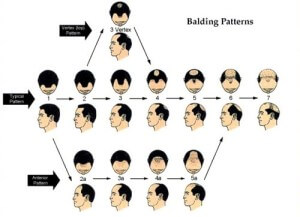
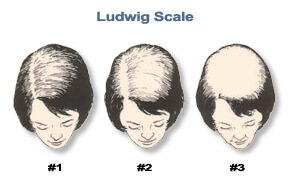
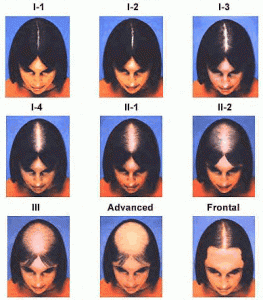
 Dr. Alan J. Bauman, M.D.Hair Loss & Hair Transplant ExpertBoca Raton, FL
Dr. Alan J. Bauman, M.D.Hair Loss & Hair Transplant ExpertBoca Raton, FL